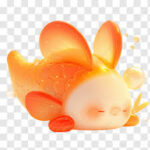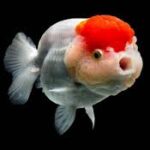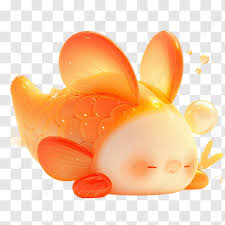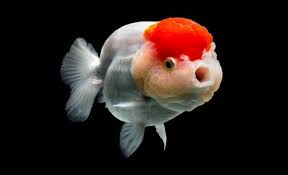China is the birthplace of tea and has a rich tradition of producing some of the finest teas in the world. With a history spanning thousands of years, Chinese tea culture is deeply rooted in quality craftsmanship, regional specialties, and unique processing techniques. However, with the global demand for Chinese fresh tea increasing, distinguishing high-quality tea from lower-grade or counterfeit products has become essential for tea enthusiasts.
In this guide, we will explore the key characteristics that define premium Chinese fresh tea and how to evaluate its quality before purchasing.
1. Understanding the Basics of Chinese Fresh Tea
Before diving into quality identification techniques, it’s important to understand the different types of Chinese fresh tea.
Main Categories of Chinese Fresh Tea:
✔ Green Tea (绿茶) – Unoxidized, fresh, and vibrant, known for its grassy and sweet flavors. (e.g., Longjing, Biluochun)
✔ Black Tea (红茶) – Fully oxidized, rich, and malty, often with sweet or fruity notes. (e.g., Keemun, Lapsang Souchong)
✔ Oolong Tea (乌龙茶) – Partially oxidized, offering a balance of floral, fruity, and roasted flavors. (e.g., Tieguanyin, Dahongpao)
✔ White Tea (白茶) – Minimally processed, light, and delicate with floral and honey notes. (e.g., Baihao Yinzhen, Bai Mudan)
✔ Pu-erh Tea (普洱茶) – Aged and fermented, known for its deep, earthy taste. (e.g., Raw Pu-erh, Ripe Pu-erh)
Each category has unique quality markers, but there are universal factors that determine whether a tea is fresh, authentic, and premium.
2. Key Characteristics of High-Quality Chinese Fresh Tea
To identify high-quality fresh Chinese tea, consider the following five essential aspects:
A. Appearance and Color
A tea’s dry leaves provide the first visual clue about its quality.
✔ Uniformity: High-quality tea leaves should be consistent in shape and size. Uneven leaves, excessive stems, or broken pieces indicate lower quality.
✔ Vibrant Color: Premium teas should have bright and lively colors. For example:
- Green tea: Bright green or jade-like hue
- Black tea: Deep brown to golden tips
- Oolong tea: Rich dark green to brown
✔ Fur on Leaves: Some top-tier teas, like Baihao Yinzhen (Silver Needle) and Biluochun, have tiny white hairs (tea fuzz) on the buds, a sign of tenderness and high quality.
🚫 Avoid: Dull, faded, or overly dark leaves, as these often indicate old or low-grade tea.
B. Aroma and Fragrance
A fresh tea’s aroma is a key indicator of its quality.
✔ Natural and Pleasant Fragrance: High-quality Chinese fresh tea should have a clean, natural aroma that reflects its variety. For instance:
- Longjing tea (Dragon Well) – Chestnut and fresh grass aroma
- Tieguanyin – Floral and creamy scent
- Keemun black tea – Fruity and chocolate-like notes
✔ Strength of Aroma: A premium tea will release a rich and lasting fragrance, even before brewing. The aroma should be pronounced but not artificial.
🚫 Avoid: Teas that have a musty, stale, or overly smoky scent, as they may be aged improperly, stored poorly, or artificially scented.
C. Texture and Leaf Quality
Handling the dry tea leaves can provide insight into their freshness and processing quality.
✔ Smooth and Tender: High-quality tea leaves should feel smooth, soft, and pliable rather than brittle.
✔ Springy and Resilient: When rolled between fingers, whole leaves should not easily crumble—they should maintain their integrity.
🚫 Avoid:
- Leaves that are too dry and easily break (indicating poor storage).
- Leaves that feel damp or sticky (sign of moisture contamination).
D. Flavor and Taste
The ultimate test of quality is how the tea tastes when brewed.
✔ Pure, Layered Flavor: High-quality tea offers a smooth, well-balanced taste with layers of complexity.
✔ Lingering Aftertaste: A good tea will leave a pleasant sweet, floral, or umami finish on the palate.
✔ Smooth Texture: The tea should be silky and refreshing, without excessive bitterness.
Tasting Guide for Famous Teas:
- Longjing (Dragon Well) – Sweet, nutty, and refreshing
- Dahongpao – Bold, roasted, and slightly fruity
- Pu-erh – Earthy, deep, and sometimes woody
🚫 Avoid:
- Flat or bland tea: This may indicate that the tea is old or low-grade.
- Excessively bitter or sour taste: This could mean the tea was over-processed or low quality.
E. Brewed Leaves (Infused Leaf Examination)
After brewing, examining the wet tea leaves can reveal important details.
✔ Soft, Intact Leaves: High-quality tea leaves should unfold naturally, maintaining their shape and structure.
✔ Even Color: The leaves should be consistent in color, without too much variation.
✔ Tender and Supple Texture: Premium leaves feel silky and soft after infusion.
🚫 Avoid:
- Leaves that turn dark brown too quickly (indicating excessive oxidation).
- Leaves that look broken and rough (suggesting machine-processing instead of hand-rolling).
3. How to Avoid Fake or Low-Quality Chinese Tea
With the rise of commercialized tea production, some sellers mix inferior tea leaves or use chemical additives to mimic premium teas. Here’s how to avoid counterfeit products:
A. Choose Reputable Sellers
✔ Buy from trusted tea brands like Tenfu, China Tea, Wuyistar, and Zhang Yiyuan.
✔ Look for certifications like organic tea labels or direct farm sourcing.
B. Beware of Artificial Coloring or Scents
✔ Natural tea should not have an overpowering artificial smell.
✔ Green teas should not have excessively bright neon-green colors (which could indicate chemical treatment).
C. Avoid Mass-Produced, Cheap Teas
✔ Be cautious of overly cheap tea—high-quality fresh tea requires careful hand-processing and will not be sold at very low prices.
4. Best Storage Practices to Maintain Tea Freshness
To preserve the quality of your Chinese fresh tea, follow these storage tips:
✔ Keep tea in an airtight container to prevent oxidation.
✔ Store in a cool, dark place away from light and humidity.
✔ Avoid strong odors (tea easily absorbs surrounding smells).
✔ Use tea tins or vacuum-sealed bags for long-term freshness.
Conclusion
Identifying high-quality Chinese fresh tea requires a combination of visual inspection, aroma analysis, texture testing, taste evaluation, and infused leaf examination. By following these guidelines, you can select the finest Chinese teas, ensuring a genuine and enriching tea-drinking experience.
💡 Remember: Great tea is an art—when you invest in premium-quality fresh tea, you are not just buying a beverage, but also embracing centuries of Chinese tea tradition and craftsmanship.
🍵 Enjoy your journey into the world of authentic Chinese fresh tea! 🍵










